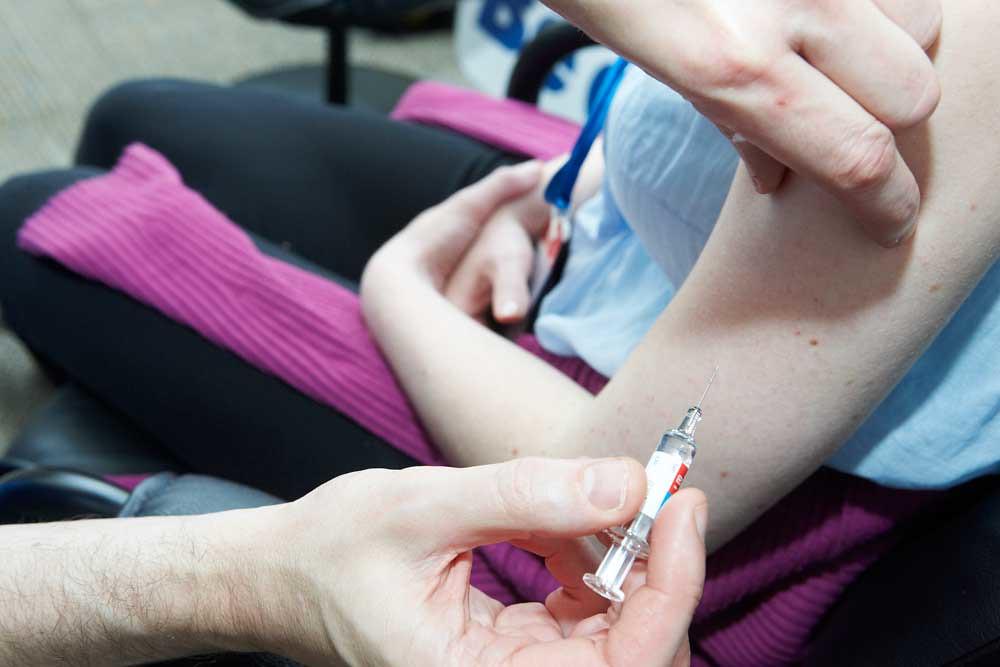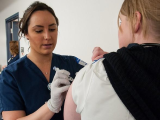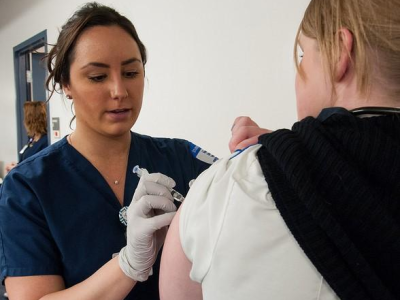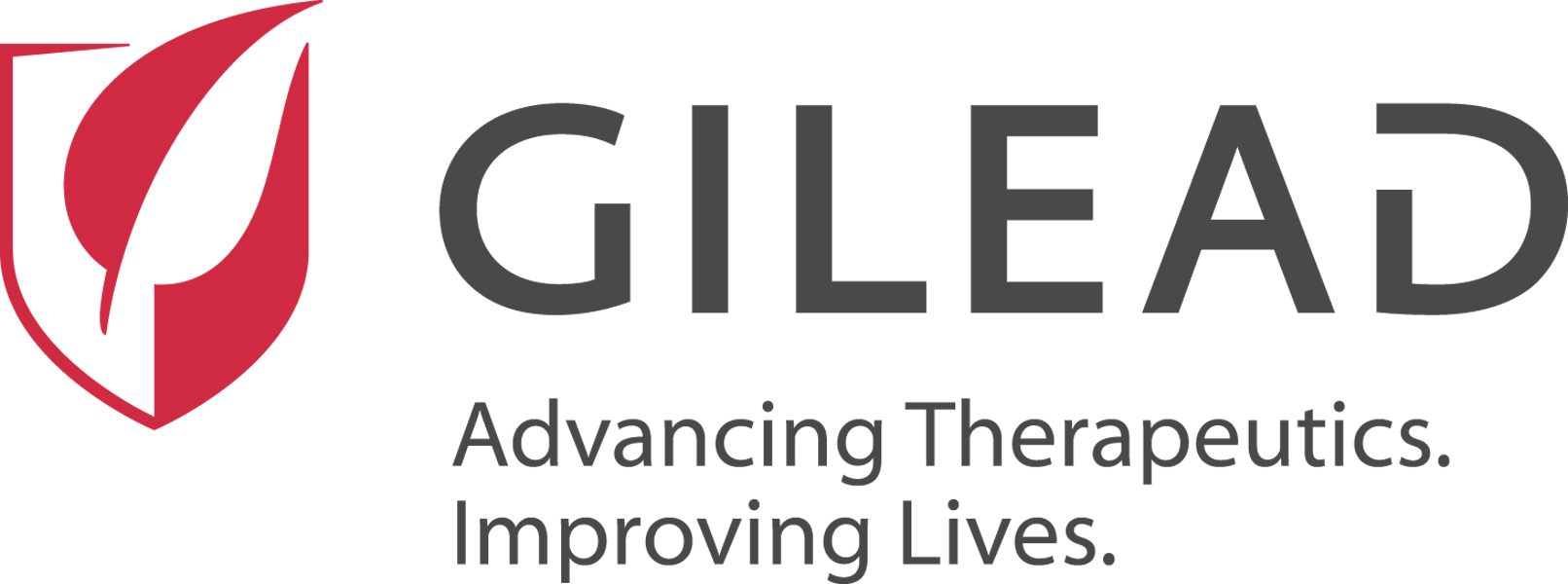New research estimates that protection from influenza vaccine in the United States was 33% to 42% in 2022-23 and also benefitted unvaccinated people, despite a second study noting a decline in vaccine coverage from 2022 to 2024, even among groups with a history of strong uptake.
Vaccination confers direct, indirect benefits
For the first study, published last week in JAMA Network Open, University of Pittsburgh researchers simulated different levels of flu virus transmissibility, vaccine effectiveness (VE), and vaccine uptake among the 1.2 million residents of Allegheny County, Pennsylvania, in 2010 to estimate the burden of flu and direct and indirect benefits of vaccination under different conditions.
The team noted that case numbers vary widely even within an influenza subtype in different seasons, likely due to factors such as immunity from previous infections, antigenic drift, and vaccine protection in the current season, which depends on match to circulating strains and vaccine uptake.
The investigators ran agent-based simulations using the Susceptible, Exposed, Infectious, and Recovered model and overall vaccine uptakes of 22% to 71% from August 2022 to May 2023. The median participant age was 40.6 years, and 51% were female.
These findings underscore the importance of vaccination in disease prevention and control and show that indirect benefits are limited in high transmission situations.
"Vaccination also provides indirect benefit, effectively shielding unvaccinated portions of the population from infection by decreasing the number of exposures unvaccinated individuals receive," the study authors wrote. "Both direct and indirect benefits decrease the number of infections required to reduce the effective reproduction rate [number of people an infected person will transmit the virus to] to less than 1 and halt transmission."
The flu burden averted by vaccination varied based on strain transmissibility and VE. Modeling based on a VE of 40% suggested that vaccination prevented 32.9% to 41.5% of symptomatic and asymptomatic flu infections.
While the benefit to vaccinees was always greater, immunization also indirectly benefitted the unvaccinated. But at the highest transmissibility levels, like that may be seen in pandemic flu, the indirect benefit declined and eventually disappeared.
The reduction in cases was marginal in low vaccine–uptake scenarios in which VE was low, even when transmission was low overall. When VE was higher (60%), cases could be almost eliminated when only about 56% of people were vaccinated in the lowest-transmission scenarios.
When spread was greater, increased vaccine uptake resulted in less case reduction. Vaccine coverage of about 61% when the reproduction rate without vaccination was about 1.98 still halved cases when VE was 60%.
"These findings suggest that influenza vaccination benefits both the vaccinated and unvaccinated segments of the population and that vaccine effectiveness estimates in those groups may underestimate the actual effectiveness of vaccination," the authors wrote.
"Even when both vaccine effectiveness and vaccine uptake were low, vaccination showed marked reductions in disease burden for transmission levels characteristic of seasonal influenza," they added. "However, when the level of transmission was very high, even a highly effective vaccine did not protect unvaccinated individuals. These findings underscore the importance of vaccination in disease prevention and control and show that indirect benefits are limited in high transmission situations."
Uptake highest in older adults, although lower than before
The second study, published last week in PLOS Global Health, consisted of two cross-sectional surveys that evaluated flu vaccine coverage among US adults from May 2020 to October 2024.
Researchers at Southwestern Medical Center in Dallas recruited a census-matched national sample to determine whether participants had received or planned to receive the flu vaccine. They found that overall flu vaccine uptake fell over the study period, with significant drops in groups who traditionally have had high coverage.
Changes in attitudes and intentions towards vaccination during and since the COVID-19 pandemic have been associated with several factors, including changes in perceived risk and the rise of vaccine-related mis- and disinformation.
"Between 2010 and 2024, influenza is estimated to have caused 9.3 million–41 million illnesses, 120,000–710,000 hospitalizations, and 6,300–52,000 deaths annually," in the United States, they wrote. "The Centers for Disease Control and Prevention (CDC) recommends the influenza vaccine for all people over the age of 6 months who do not have contraindications."
In both 2020 and 2024, coverage was lowest among people aged 18 to 25 years (47% and 50%, respectively). In both years, uptake was highest among people older than 55. But relative to 2022, uptake in 2024 fell among participants who were older (11% decrease), men (13%), White (7%), non-Hispanic (5%), and more educated (16%).
"Changes in attitudes and intentions towards vaccination during and since the COVID-19 pandemic have been associated with several factors, including changes in perceived risk and the rise of vaccine-related mis- and disinformation," the researchers wrote.
"Targeted behavioral interventions can be used to shift attitudes, intentions, and eventually, behaviors, towards health-seeking behaviors like vaccination," they concluded. "We must target these demographics with evidence-based behavioral interventions to improve uptake of influenza vaccination."



















